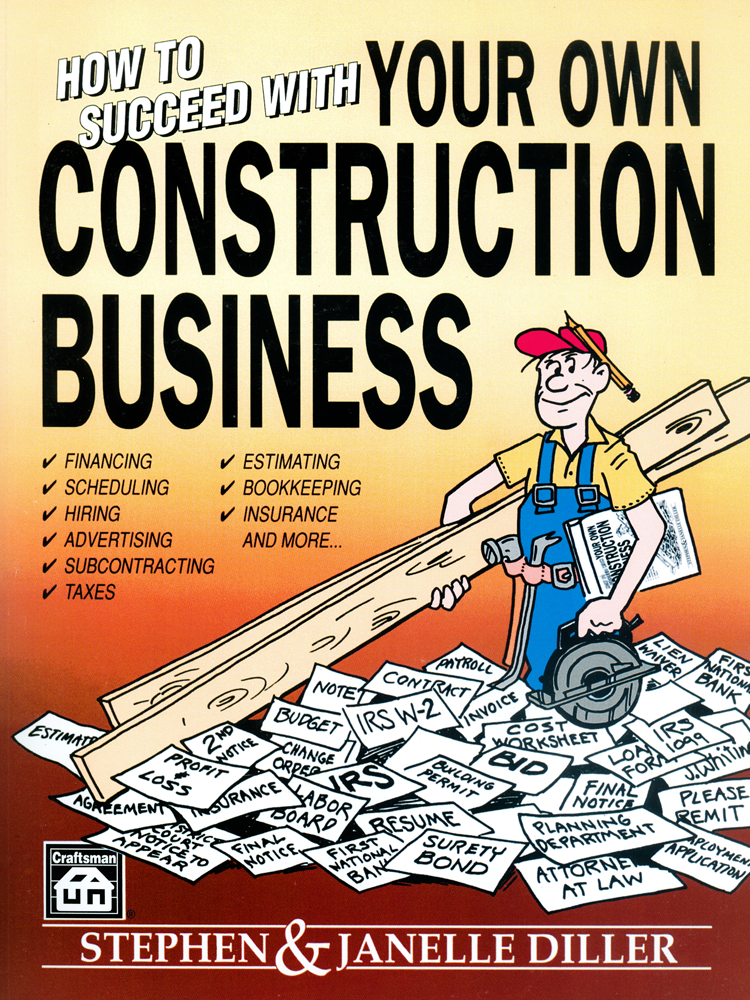Make Your Mark with a Toll-Free Number
At one time or another most people, businesses and government entities need roofing services. Where do they turn for help? You might say the phone directory, but savvy roofers have discovered that it’s easier to capture those customers with a toll-free phone name that avoids the directory entirely.

At one time or another most people, businesses and government entities need roofing services. Where do they turn for help? You might say the phone directory, but savvy roofers have discovered that it’s easier to capture those customers with a toll-free phone name that avoids the directory entirely.
Imagine your prospects are driving down the road when they see a billboard or your truck. They have just seconds to register a phone number that will lead them to call you about their roofing project. But numbers in a series are difficult to recall. After all, what is a prospect more likely to remember -1-800-774-6837 or 1-800-Roof Care?
For years, Fortune 500 firms have branded themselves with vanity names in toll-free numbers. We recognize these major companies with numbers such as 1-800-Go Fed Ex, 1-800-Flowers, 1-800-Pick UPS and countless more. These companies have successfully committed their numbers to our memory. Their memorable numbers translate to convenience for the customer, better branding, lead generation, word-of-mouth recommendations, and, ultimately, sales and profits.
Andy Sacks has helped top-level clients capture their memorable vanity names such as 1-800-Home Depot or 1-800-Yellow Cab through his company, MediaOptimizers.com. He recommends toll-free names because, “The ideal word-based 800 number is building free shelf space in your customer’s mind. That unforgettable number helps them call you back. More calls optimize your ROI and that lowers your cost per call.”
But it’s not necessary to rank among the Fortune 500 or even the Fortune 2000 to benefit from an 800 vanity name. It's available easily to local or regional roofing companies. One user who chose an 800-name-number says his expectations “were greatly exceeded.” He considered the number memorable and said it made it easier to let clients know how to reach his services. “It’s nice to say to people ‘If you think of roofing, just call 1-800-Roof Care.’ It’s very marketable and our sales have increased dramatically ever since.”
Work with a specialized company that can offer the rights to a specific toll-free number. These ‘shared-use providers’ typically have a variety of toll-free prefixes available and they manage the phone routing for the name you select so that calls will ring seamlessly into your local office. In most cases, you can choose the area codes, regions or states needed for the name used with that 1-800 or other toll-free prefix. Then, when a prospect in the area sees that name, for example, 1-800-Roof Care, they dial and the call rings directly to your office.
For businesses with multiple locations, the number can be routed to the office closest to the caller. Shared-use providers charge as little as $200 a month for the exclusive vanity name and routing service per area code. The actual calls received are billed at a cost per minute which can be nominal but shows that the number is doing its job in attracting prospects.
The system can also help track advertising across various media by noting which calls come from the vanity number. If you choose it, it’s possible to maintain certain regular phone lines and send vanity phone name calls to other lines, thus tracking marketing awareness to see how your various marketing efforts work. As you advertise in different media, you can judge the media based on which calls come into the dedicated phone lines.
Whoever you use for your vanity provider, the rules of the game are well documented and Ashley provided some tips:
1. Always use words. Avoid purchasing a hybrid “number” with both numbers and words. For example, avoid 1-800-265-Roof. Use something like 1-800-Roof Care.
2. Use recognized toll-free prefixes. A 2009 test by search marketing company, EngineReady.com, compared the various toll free prefixes for conversion rates. The highest return resulted from the 1-800 prefix, which was the original and best known. The next was 1-888. The last two were 877 and 866.
3. Spell out your service or product. “Roof care” says what you do. Your name, however, may not. Using “Jones Brothers,” for example, would not make it clear what kind of service is being offered.
4. Use words that the average person can spell. Don’t get too fancy. And avoid using ‘Q” or “Z” - such as 1-800-Roof Quik - since those letters have only recently been added to telephone keypads.
5. Once you have the vanity phone number, use it everywhere. It should become your main number which the routing company will send to any phone line you choose. The words should be on all your vehicles, signage, banners, business cards, direct mail, billboards - in fact, anywhere you want to provide the customer with phone information.
A vanity phone name can reinforce your marketing across all media. Most of all, it helps prospects remember your number in order to contact you to handle their roofing needs. Used well, a vanity name can make a solid impact on your bottom line.

A memorable toll-free vanity phone number can be a great marketing tool.
At one time or another most people, businesses and government entities need roofing services. Where do they turn for help? You might say the phone directory, but savvy roofers have discovered that it’s easier to capture those customers with a toll-free phone name that avoids the directory entirely.
Imagine your prospects are driving down the road when they see a billboard or your truck. They have just seconds to register a phone number that will lead them to call you about their roofing project. But numbers in a series are difficult to recall. After all, what is a prospect more likely to remember -1-800-774-6837 or 1-800-Roof Care?
For years, Fortune 500 firms have branded themselves with vanity names in toll-free numbers. We recognize these major companies with numbers such as 1-800-Go Fed Ex, 1-800-Flowers, 1-800-Pick UPS and countless more. These companies have successfully committed their numbers to our memory. Their memorable numbers translate to convenience for the customer, better branding, lead generation, word-of-mouth recommendations, and, ultimately, sales and profits.
Andy Sacks has helped top-level clients capture their memorable vanity names such as 1-800-Home Depot or 1-800-Yellow Cab through his company, MediaOptimizers.com. He recommends toll-free names because, “The ideal word-based 800 number is building free shelf space in your customer’s mind. That unforgettable number helps them call you back. More calls optimize your ROI and that lowers your cost per call.”
But it’s not necessary to rank among the Fortune 500 or even the Fortune 2000 to benefit from an 800 vanity name. It's available easily to local or regional roofing companies. One user who chose an 800-name-number says his expectations “were greatly exceeded.” He considered the number memorable and said it made it easier to let clients know how to reach his services. “It’s nice to say to people ‘If you think of roofing, just call 1-800-Roof Care.’ It’s very marketable and our sales have increased dramatically ever since.”
Local, Regional or National Routing
You may think you’re familiar with toll-free numbers, but most people still consider them to be long distance. Although 1-800 numbers originated as a toll-free service for long distance calls, today’s regional routing systems offer the advantage of a vanity name to be targeted toward local areas. Roofers large and small can have exclusive ownership for toll-free names in the specific areas where their potential contacts live. It may be one area code, overlapping areas for a large metropolitan area, or entire states.Selecting a Vanity Number
Don’t choose just any vanity name, said Sacks. “I often call people with advertising and ask their phone numbers. Some can’t even remember their own vanity number. You don’t just need one, you need a good, memorable one.”Work with a specialized company that can offer the rights to a specific toll-free number. These ‘shared-use providers’ typically have a variety of toll-free prefixes available and they manage the phone routing for the name you select so that calls will ring seamlessly into your local office. In most cases, you can choose the area codes, regions or states needed for the name used with that 1-800 or other toll-free prefix. Then, when a prospect in the area sees that name, for example, 1-800-Roof Care, they dial and the call rings directly to your office.
For businesses with multiple locations, the number can be routed to the office closest to the caller. Shared-use providers charge as little as $200 a month for the exclusive vanity name and routing service per area code. The actual calls received are billed at a cost per minute which can be nominal but shows that the number is doing its job in attracting prospects.
The system can also help track advertising across various media by noting which calls come from the vanity number. If you choose it, it’s possible to maintain certain regular phone lines and send vanity phone name calls to other lines, thus tracking marketing awareness to see how your various marketing efforts work. As you advertise in different media, you can judge the media based on which calls come into the dedicated phone lines.
Gaining a Competitive Edge
The fees for vanity numbers don’t always increase overall ad budgets, since some contractors simply lower their Yellow Pages expenses or other outlays, said Dave Ashley of Telename (www.telename.com or 1-800-Tel-Name), a 1-800 shared-use provider and a pioneer in the business. “It’s an advantage when the memorability of the 1-800 name keeps customers from even going to the Yellow Pages,” he adds.Whoever you use for your vanity provider, the rules of the game are well documented and Ashley provided some tips:
1. Always use words. Avoid purchasing a hybrid “number” with both numbers and words. For example, avoid 1-800-265-Roof. Use something like 1-800-Roof Care.
2. Use recognized toll-free prefixes. A 2009 test by search marketing company, EngineReady.com, compared the various toll free prefixes for conversion rates. The highest return resulted from the 1-800 prefix, which was the original and best known. The next was 1-888. The last two were 877 and 866.
3. Spell out your service or product. “Roof care” says what you do. Your name, however, may not. Using “Jones Brothers,” for example, would not make it clear what kind of service is being offered.
4. Use words that the average person can spell. Don’t get too fancy. And avoid using ‘Q” or “Z” - such as 1-800-Roof Quik - since those letters have only recently been added to telephone keypads.
5. Once you have the vanity phone number, use it everywhere. It should become your main number which the routing company will send to any phone line you choose. The words should be on all your vehicles, signage, banners, business cards, direct mail, billboards - in fact, anywhere you want to provide the customer with phone information.
A vanity phone name can reinforce your marketing across all media. Most of all, it helps prospects remember your number in order to contact you to handle their roofing needs. Used well, a vanity name can make a solid impact on your bottom line.
Looking for a reprint of this article?
From high-res PDFs to custom plaques, order your copy today!







